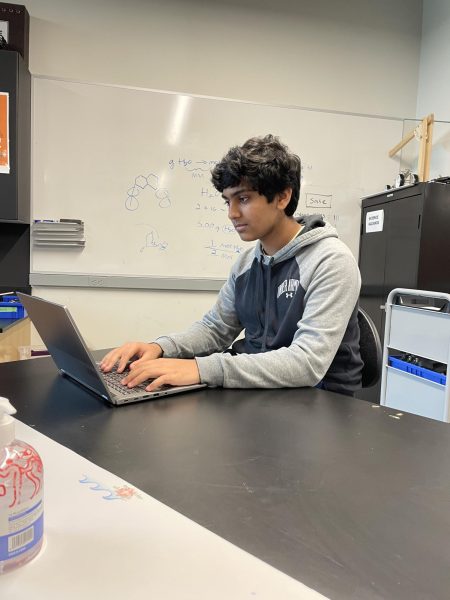The first Science Alliance meeting started with a slideshow presentation put together by the club’s captains, Henry Hilton and McKinley Garner, that gave new members an overview of what they should expect from the club. Students were then tasked to find an object in the room that would roll the farthest off a ramp as a fun brain teaser to get people moving and into the engineering mindset. Unfortunately, their time was cut short by the fire drill planned that day.
The Science Alliance is one of the bigger clubs at SPA, with around 30 total members. Most of the Science Alliance joins SPA’s competitive Science Olympiad team, but some members just attend club meetings without competing in tournaments. Since there is so much crossover between the club and the team, people will refer to both of them collectively as the Science Olympiad.
Students with many different backgrounds are encouraged to consider joining the Science Alliance to improve their diversity. The club has been predominantly male in the past, so the Science Alliance hoped to reach a broader range of students during this year’s club fair. Vice-captain Shefali Meagher said, “I’m hoping this year we will have an even more diverse group of people […] at least one girl please!”

During the fair, the club implemented unique tactics like digital tattoos, cakes, and hot dogs to attract more attention. The club’s advisor, Colton Werner, stood on a hill beside their stand and grilled hot dogs to entice possible new members. Hilton said, “Expect that same type of novelty and flair with all the events the Science Olympiad does this year!”
There has only been one club meeting so far, but the captains plan to engage club members in science-type challenges for the first half of the year, such as reconstructing starburst statues. Hilton explains that students will form groups to compete with each other, and one person will write down instructions to recreate a starburst statue on a piece of paper. Then, the second student will mold some starbursts according to the instructions. Whichever group’s end product looks most like the original statute wins. “This activity helps people understand the idea of programming better,” Hilton said.
Since competition season is in the latter half of the year and not all club members choose to compete, the Science Alliance likes to work on passion projects inside and outside meetings. One of the bigger projects the club is hoping to tackle this year is an advisory car-making challenge as a part of the school house cup competition. They still need to figure out all the specifics, but the basic idea is that each advisory will get the same materials to make a wind-up car, and whoever’s car goes the farthest will get more points for their house.
The second half of the year is more focused on upcoming tournaments, such as the Science Bowl in January and the spring regional tournaments. Many of the activities done earlier in the year are set up as preparation for actual competitions, and during competition season, the team starts to practice more regularly after school. The Science Olympiad events cover all STEM fields, including engineering, biology, environment, and technology. Some events are more building and hands-on-focused, but there is also an academic side where participants compete by taking written tests about various STEM subjects.
The main goals the Science Alliance hopes to accomplish this year are increasing their diversity, doing better at the state tournament and having more fun with science in general. To meet their goals, they wish for anyone interested in STEM academics to come to their next club meeting.